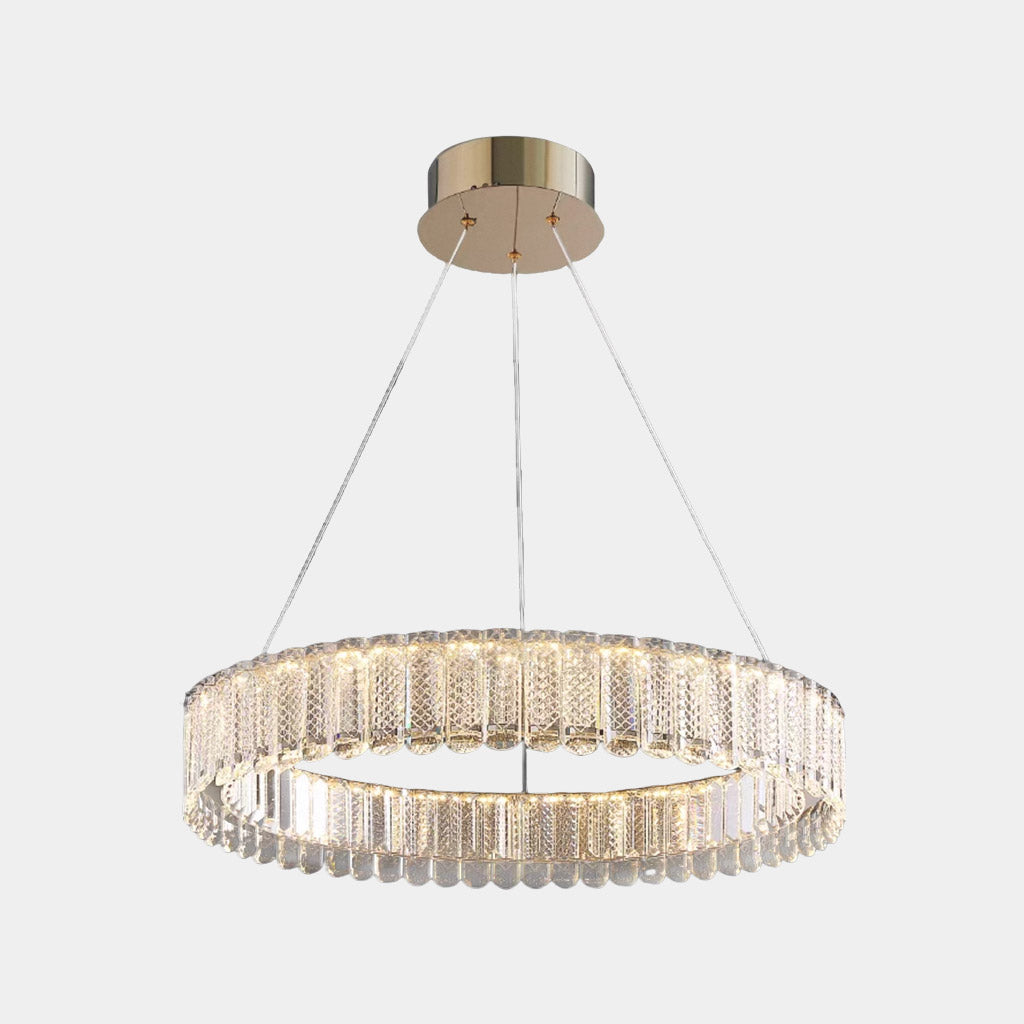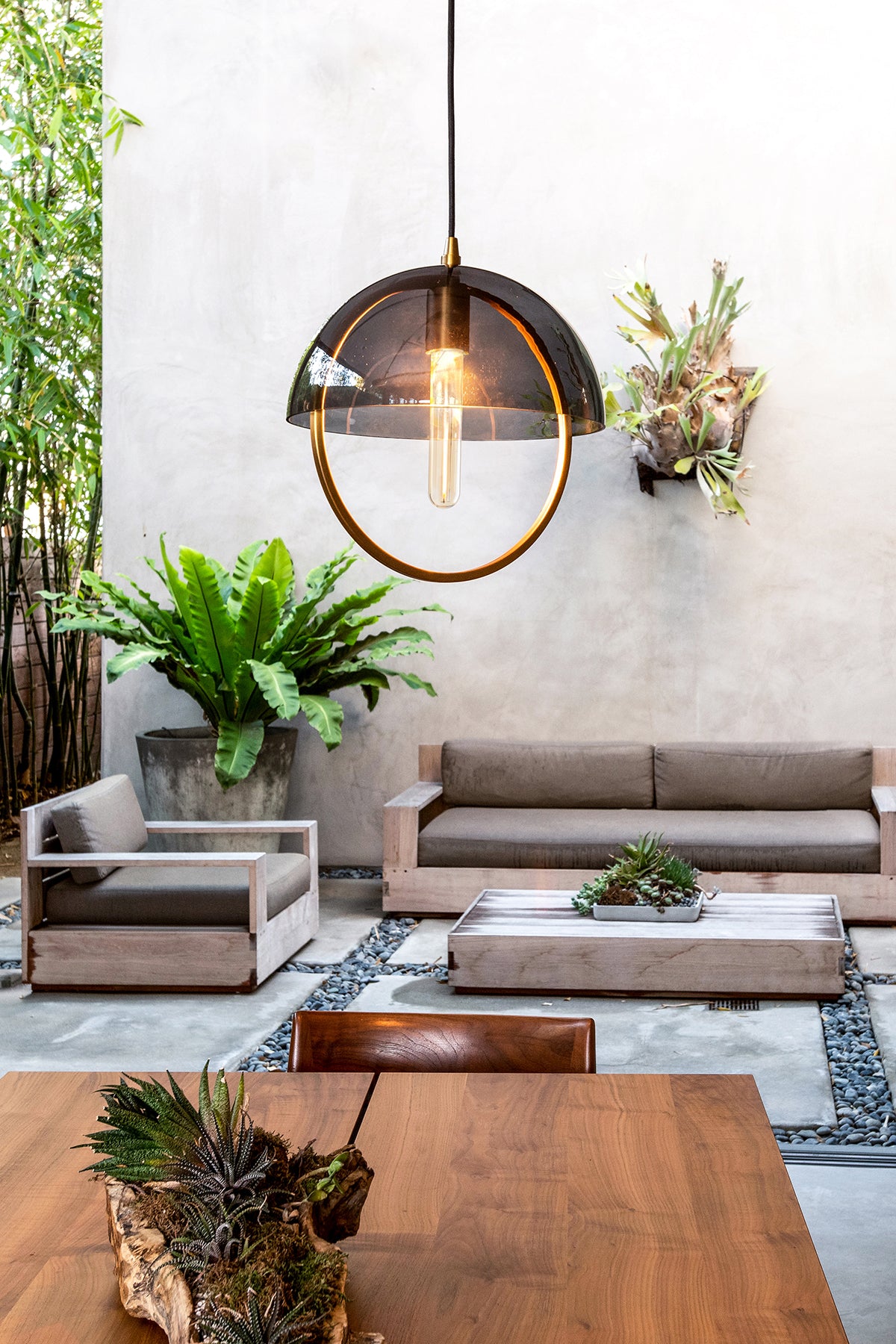Just how to Pick the Perfect Pendant Light to Improve Your Interior Design
Choosing the excellent pendant light calls for careful consideration of numerous elements. The design ought to line up with the general design, while dimension plays a crucial function in making sure correct proportion. Color and coating alternatives can enhance visual charm. Additionally, assessing light output is vital for performance - Pendant Light. Recognizing these facets can change a space, developing a welcoming atmosphere. The procedure involves even more than just aesthetics; there are usefulness that have to also be dealt with.
Recognizing Various Necklace Light Styles
Necklace lights come in a range of designs, each offering distinct visual and useful advantages. From commercial designs that feature subjected bulbs and steel finishes to sophisticated glass fixtures that stimulate a feeling of sophistication, the alternatives are large. Contemporary pendant lights often highlight clean lines and minimal shapes, while vintage-inspired styles may integrate detailed detailing and cozy tones.
For those seeking a rustic charm, components made from natural materials like wood or rattan supply a comfortable feeling. In addition, multi-light pendants can serve as statement items, integrating a number of light bulbs in a single style for dramatic effect.
Each style adds differently to an area, influencing the overall atmosphere and character. Recognizing these varied pendant light styles permits developers and house owners to make enlightened options that align with their interior decoration vision, boosting both performance and aesthetic appeal in their atmospheres.
Identifying the Right Dimension for Your Room
When picking a pendant light, precisely gauging the ceiling height is essential for achieving the appropriate balance in a room. In addition, computing the range of the fixture in connection with the surrounding space guarantees that the light matches rather than bewilders the design. These factors play a crucial duty in producing an unified indoor atmosphere.
Action Ceiling Elevation
To attain a visually pleasing style, gauging ceiling height is essential for picking the ideal size of necklace light. The height of the ceiling directly influences the range and proportion of the lighting fixture. In rooms with conventional eight-foot ceilings, pendant lights need to commonly spend time 30 to 36 inches over the surface listed below, such as a table or cooking area island. For higher ceilings, modifications have to be made accordingly, as a higher setup can develop a much more remarkable effect. When identifying the ideal height, it is vital to mirror on the overall room dimensions and layout. Exact dimensions assist ensure that the pendant light not only complements the room's style but also offers sufficient illumination without frustrating the area.
Determine Fixture Range
Selecting the ideal dimension for a lights component is crucial for developing harmony in an area's style. To determine fixture scale, one must take into consideration the dimensions of the space. A common standard entails including the room's size and width in feet, which gives a suitable diameter in inches for a pendant light. A room measuring 10 feet by 12 feet suggests a component size of approximately 22 inches. Additionally, the height of the ceiling plays an important duty; taller ceilings might accommodate bigger fixtures. Guaranteeing the necklace hangs at an ideal elevation-- usually 30 to 36 inches above surface areas-- more enhances performance and aesthetic allure. Effectively scaled fixtures can change an area, making it feel inviting and well-coordinated.
Thinking About Shade and End Up Options
When selecting a necklace light, the interaction of color and coating can substantially influence the total visual of a space. Working with the light's shade scheme with existing style guarantees an unified layout, while the choice of finish product can boost texture and design. Thoughtful consideration of these aspects is essential for accomplishing a cohesive search in interior decoration.
Shade Scheme Control
Shade combination coordination plays a necessary function in accomplishing an unified indoor style, particularly when choosing pendant lights. Picking a necklace light that complements the existing color pattern improves the total visual. A light with cozy tones can develop a comfy ambience in a room filled with natural tones, while cooler tones may integrate properly with a contemporary, minimal palette. It is essential to take into consideration the dominant colors in the space, guaranteeing that the pendant light either mixes flawlessly or gives their explanation a striking comparison. Additionally, integrating accent shades from the combination can link the style with each other, producing a cohesive look. Eventually, thoughtful color control boosts the visual effect of the necklace light within the interior decoration scheme.
End Up Product Considerations

The choice of surface materials for pendant lights considerably influences the overall style visual of a space. Various coatings, such as matte, glossy, or distinctive, can develop differing visual influences. For example, a refined metal coating may evoke a contemporary, industrial ambience, while a matte or cleaned coating can lend a softer, a lot more natural feel. Shade alternatives, varying from traditional blacks and whites to vibrant tones, additionally play an important duty in balancing with existing decor. In addition, materials such as glass, wood, or ceramic can boost the necklace's personality and enhance surrounding elements. Inevitably, choosing the appropriate coating material ensures the necklace light not only illuminates however additionally enhances the area's layout story.
Evaluating Light Result and Functionality
Light output and capability are fundamental consider choosing the optimal necklace light for any area. Examining the brightness of a pendant light entails comprehending lumens, which gauge the total light emitted. A greater lumen count usually shows a brighter light, important for jobs such as analysis or food preparation. Additionally, the shade temperature, measured in Kelvin, impacts the setting; warmer tones create a comfortable ambience, while cooler tones promote awareness.
Performance prolongs beyond brightness to include the component's layout and positioning. Adjustable pendants can supply functional lights for different activities, while dealt with alternatives include a statement to the style. Thinking about the height at which the pendant will certainly hang is crucial, as it influences both light distribution and safety. Eventually, a well-assessed light outcome and performance will assure that the selected pendant light meets both functional and visual demands in the desired space.
Matching Pendant Lights With Your Inside Layout Motif
Just how can one ensure that pendant lights enhance the general interior design motif of a space? The vital hinge on choosing fixtures that resonate with the established visual. In a minimalist setup, sleek and straightforward designs in neutral shades can develop a natural appearance. On the other hand, a vintage-themed room might take advantage of ornate necklace lights, featuring intricate layouts or warm tones that stimulate nostalgia.
In addition, taking into consideration the material and coating of the necklace light is essential. Steels like brass or copper can include a touch of sophistication to a contemporary area, while timber elements may complement rustic interiors.
Shade consistency also plays a considerable role; choosing tones that line up with the room's combination warranties that the illumination really feels integrated instead of out of area. Eventually, the appropriate necklace lights must not just light up but additionally work as a stylistic extension of the overall layout, enhancing the atmosphere and personality of the space.
Setup and Positioning Tips for Optimum Effect

In larger spaces, take into consideration using larger clusters or pendants to avoid official site them from really feeling shed in the room. For an open-concept format, straightening the necklaces with various other layout aspects, like kitchen counters or furnishings lines, cultivates communication. In addition, dimmer switches can boost adaptability, enabling flexible ambiance. Inevitably, thoughtful installment and positioning of pendant lights can transform the looks and performance of any type of interior design.
Regularly Asked Concerns
What Are the Best Products for Necklace Lights?
The most effective materials for pendant lights consist of glass for sophistication, metal for longevity, and fabric for heat. Each material supplies distinct appearances, enabling developers to create versatile lights services that boost various interior designs and ambiences.
How Do I Maintain and Clean Necklace Lighting?
Maintaining and cleaning up pendant lights entails regular dusting, making use of a moist fabric for surface areas, and employing gentle cleansers for glass parts. Normal look for loose fittings ensure security and extend the life-span of the fixtures.

Can Pendant Lights Be Dimmable?
The concern of whether pendant lights can be dimmable matters for several. Various versions supply dimmable features, permitting users to adjust illumination, boosting ambiance and performance. Compatibility with dimmer switches is crucial for peak performance.
What Is the Life Expectancy of Normal Necklace Light Bulbs?
The life expectancy of normal necklace light bulbs differs substantially. Incandescent light bulbs last concerning 1,000 hours, while portable fluorescent lights (CFLs) can last 7,000 to 15,000 hours. LED bulbs provide the lengthiest life-span, rising to 25,000 hours or more.
Are Necklace Lighting Suitable for Outdoor Use?
Necklace lights can be ideal for outdoor usage, yet they must be particularly developed for such atmospheres. Weather-resistant materials and proper installment are important to ensure toughness and security against elements like moisture and wind.
Shade palette control plays a necessary duty in achieving an unified indoor style, particularly when picking pendant lights. The selection of surface products for pendant lights substantially influences the overall design visual of a space. Light result and performance are fundamental factors in picking the ideal necklace light for any space. Reviewing the illumination of a necklace light includes understanding lumens, which gauge the total light produced (Pendant Light). Exactly how can one ensure that necklace lights enhance the general interior layout theme of a room?